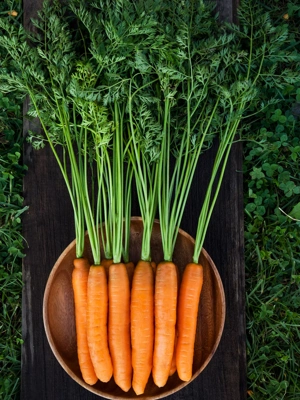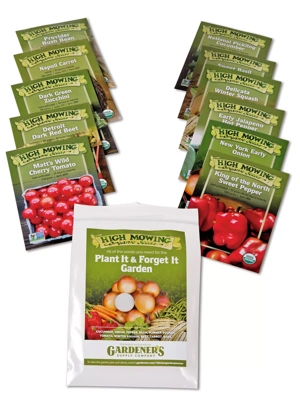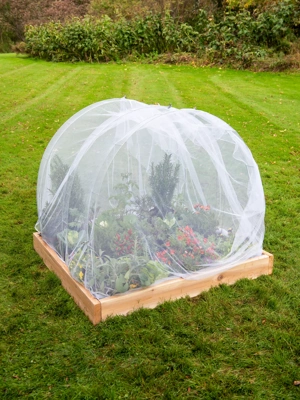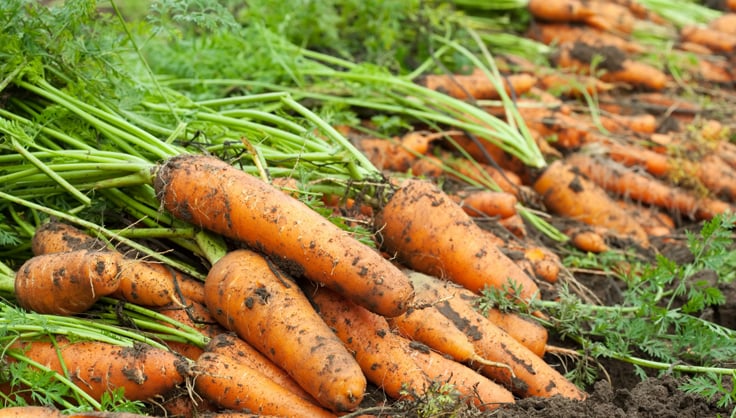Carrots
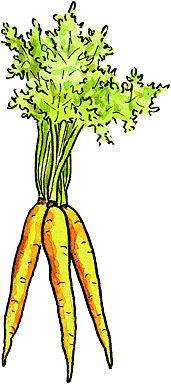
A raised bed provides carrots with the perfect soil conditions to reach their full potential. With deep, loose soil and consistent moisture, they'll develop long, straight roots with beautiful colors and satisfying crunch.
Carrot seed should be sown directly in the garden. Though the seeds will germinate in soil as cold as 50 degrees, the optimum soil temperature for germination is 70 degrees. Loosen the soil to a depth of 12" and rake the surface smooth. Distribute the seeds evenly over the area at about twice the recommended density (sow about 30 seeds per square foot). Sowing thickly helps compensate for carrots' typically irregular germination rate. Barely cover the seeds with ¼" to ½" of soil. Water well.
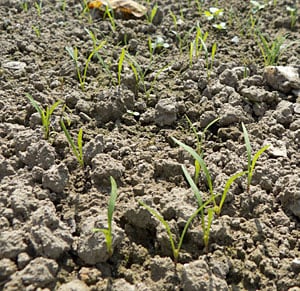
Carrot seedlings. Photo: Ann Whitman
Carrot seeds have a hard seed coat that must be softened for good germination. After planting, it's important to keep the upper inch of soil consistently moist for 7-14 days, or until seedlings are up. The newly seeded area may be covered with row cover to help retain moisture during this critical period. Once the seedlings have a few leaves, carefully thin out any crowded areas so each carrot has approximately 2" of space around it. You should have a total of about 18 plants per square foot.
Carrots prefer full sun and relatively cool soil. In a raised bed, neighboring plants will help shade the soil and keep it from getting too hot. Consistent moisture produces the tastiest carrots, so give them about 1" of water per week.
How to avoid thinning: Carrot seed is especially small, so it's difficult to get them spaced evenly. Condsider these options:
- Seed tapes have pre-spaced seeds embedded within a strip of biodegradable paper.
- Pelleted seed is coated in an inert material — often organic — which makes the seed large enough to space evenly.
With homegrown carrots, flavor and texture is more important than size. Nantes-type carrot varieties are slightly shorter than the classic supermarket carrot and have a blunt tip. In most growing conditions, they produce consistent crops of sweet, crisp carrots. Carrots come in other colors besides orange: try planting some purple (kids love them) or yellow ones as well as orange.
Carrots sown in very early spring will be ready to eat in midsummer. Begin harvesting as soon as the roots have filled out. For a fall carrot crop, replant some carrots in midsummer, using a space that's been vacated by lettuce, peas, or another early-season crop. For good midsummer germination, sow seeds under shade netting or in an area where the soil is slightly shaded and will stay cool and moist.
Last updated: 09/14/2023
Print this Article:
Related items
Related Articles
Get the Dirt
Stay up to date on new articles and advice. Please fill out the information below.

